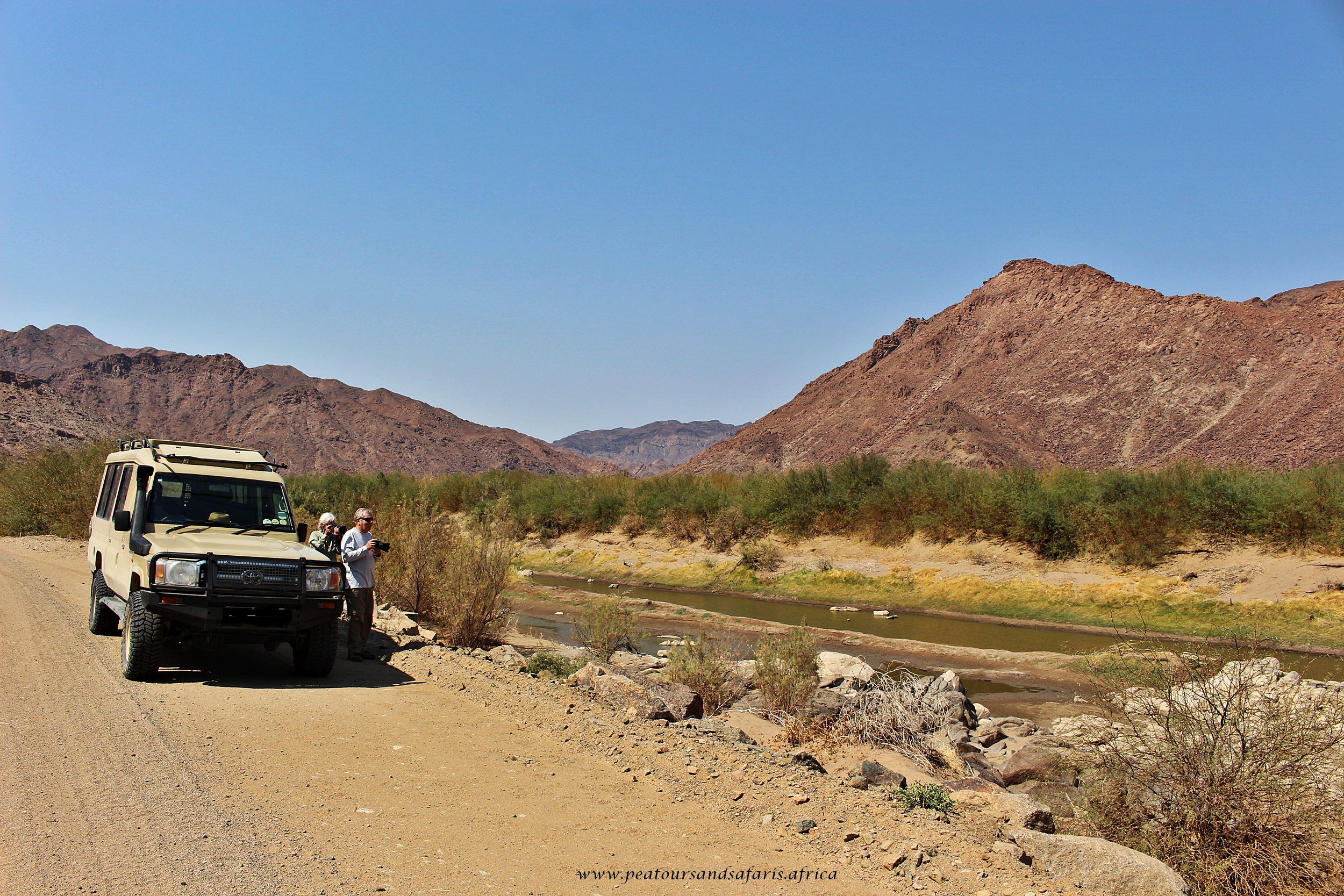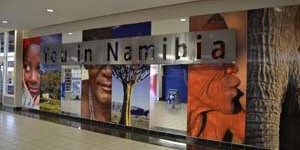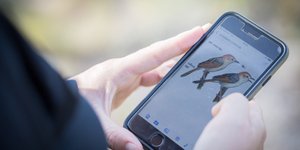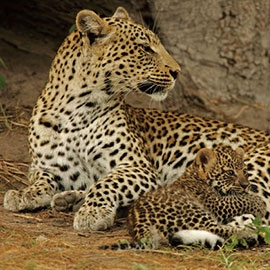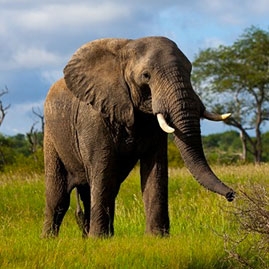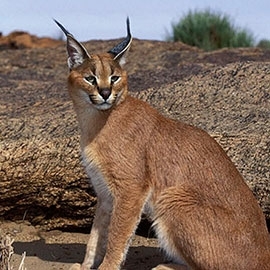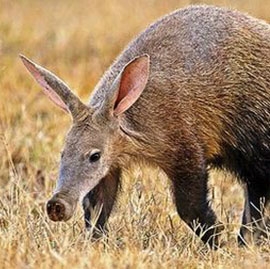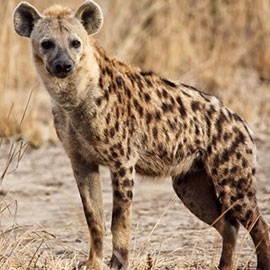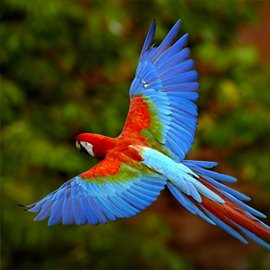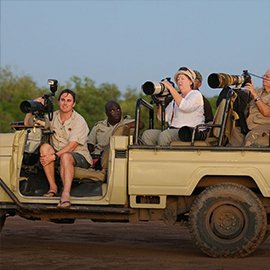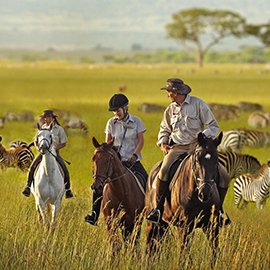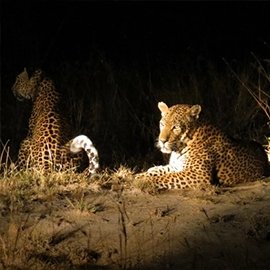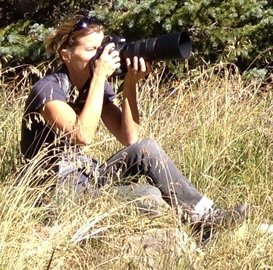Ai-Ais/Richtersveld Transfrontier Park
Safari suitability: 4/10
Find your tourVisitors seeking traditional safari fare may find themselves disappointed, but plant enthusiasts and admirers of tough desert beauty may well enjoy the desert’s dazzling peaks, plants, birds and bats.
What YAS members think
Highlights
- “Peace park” on the border of two countries
- Botanical treasures galore as well as more than 200 bird types
- Thermal hot springs
- Fish River Canyon--second-largest canyon in the world
- For the multi-day visitor
About Ai-Ais/Richtersveld Transfrontier Park
Located on the border of South Africa and Namibia, austere, arid Ai-Ais/Richtersveld Transfrontier Park is situated in a mountain desert. Established as a conservation area in 1968, the park was in 2003 founded via international treaty as a peace park. Today, the Richtersveld portion is managed by South African National Parks, and the Fish River Canyon is overseen by the Namibian Ministry of Environment and Tourism; in addition to being linked by treaty, the two sections--split in two by the Orange River—are connected by pontoon boat at Sendelingsdrif. The 6,045 km² (3,756 mile²), two-country mashup proffers the 161 km (100 mile) Fish River canyon, the Kokerboom Forest to the north and thermal hot springs to the south.
Ai-Ais/Richtersveld Transfrontier Park is the driest area in the northern cape, and it shows; the park is marked by rugged conditions and a moon-like landscape. Though the area’s only water source comes from morning fog blown in from the Atlantic Ocean—60 km (37 miles) away—diverse plant life avails itself of the park’s peaks and kloofs. The park’s botanical treasures include botter booms, quiver trees and stone plants, and endemic succulents cling most earnestly to ground and mountain. The park houses approximately 200 types of bird, and desert denizens include bats, hares, porcupines, foxes, jackals and mongooses as well as the Vervet monkey, the Chacma baboon and Hartmann’s mountain zebra.
Gorge(ous) hikes, hot-springs soaks, 4x4 travel and the examination of some 360 flowering plants await visitors keen for adventure. Those not stymied by remote locations, arid climes and cold and dewy nights will find pristine, succulent beauty in the forbidding.
When is the best time to visit Ai-Ais/Richtersveld Transfrontier Park?
The park is accessible by 4x4 only (no sedans), and travel by convoy is highly recommended. Spring visitors have the opportunity to visit a flowering desert, and guided walks leave from the Hakiesdoring hiking camp between April and September.
Namibian Side: Due to summer temperatures, which frequently rise above 45 degrees C (113 degrees F), the hot springs and hiking trail are closed during the summer months (November to mid-March for the hot springs; October to April for the trail). Because of its remote location, the park discourages single-day visits.
Sort by:

Ai-Ais/Richtersveld Transfrontier Park is Namibia's first transfrontier conservation area between South Africa and Namibia. I describe it as a diamond in the rough mainly because of its rugged wilderness terrain but so isolated and otherworldly landscape rendering it a photographer's dream. Found inside this 592 000-hectare park is a 125 000-hectare private nature conservation area, the Gondwana Canyon Park. Upon arrival at the Canyon Lodge, we embarked on a sundowner nature drive around the private concession. We were only vehicle in the park, everything so calm and quiet while we enjoyed the scenery and photography. Our local guide narrated the history of the area from during the 1800s era, with the San/Hunter gatherers, Khoi pastoralists and early Europeans, leading to the disappearance of large mammals like elephants and giraffes, and the attempts to restore the area. Set in harsh, stony plain, dotted with quiver trees, the area is indeed a photographer's haven! Wildlife sightings are far and apart. However, we encountered kudus, springboks and the near endemic Hartmann's Mountain Zebra. The following day we visited the Fish River Canyon which measures 160 km in length, up 27 km wide and depth up to 550m. On our way to Luderitz, we took a scenic drive along the Orange River. After driving several hours in this dry and secluded area, a surprise comes when a lush green environment appears at Aussenkehr Wine yards. The Orange River has some parts that are not accessible, especially on the South African side, making it a perfect wilderness destination. If one is looking for scenic photography, combined with tranquility of mother nature, this is a place to go!
It is one of the most impressive natural beauties in southern Namibia. Yes, we are talking about the spectacular Fish River Canyon, situated along the lower reaches of the Fish River. With a depth of up to 550 metres/1800 feet, the Fish River canyon is the largest canyon in Africa and the second largest in the world. The enormous ravine meanders along a distance of 100 miles/160 kilometres and is up to 17 miles/27 kilometres wide in some places. The Fish River canyon probably formed about 500 million years ago during the rainy pluvial times. The gorge was created by water erosion and the collapse of the valley bottom due to movements in the earth's crust. Because the Fish River is being dammed further north at the Hardap dam near Mariental, it only contains a small amount of running water. In winter the river bed is often completely dry or reduced to just some puddles here and there. However, after rainfalls in summer the river can, incredibly, become a raging torrent. A trip to the Fish River canyon can also be combined with an Active Safari with our sister company, Nature Travel Active. This truly memorable experience includes paddling down the Fish River during certain times of the year. The Fish River canyon has also become a popular hiking destination. However, the strenuous hike requires good physical health and can only be undertaken during the cooler winter months (between May and September). The hike is 86 km in length and takes about 5 days. Unofficial running through the canyon has subsequently evolved into the annual Fish River Canyon Ultra Marathon which held its inaugural race in 2011. This technical marathon follows most sections of the current hiking trail, testing the athlete's capabilities to the extreme. The current 100 km record is held by South African AJ Calitz, at a shade over 8 hours! To see this incredible natural wonder, join us on a Southern Namibia safari. This safari also includes visits to the Quiver Tree forest near Keetmanshoop, the Sperrgebiet with its incredible sunrise photo opportunities, the historic town of Luderitz and the iconic Sossusvlei.
 South Africa
South Africa
The Ai-Ais Richtersveld Transfrontier Park is so called because it spans the borders of South African and Namibia. Transfrontier Parks are a relatively new development in southern Africa, formed in recognition that natural ecosystems and their management shouldnt necessarily coincide with political boundaries. The Ai-Ais Richtersveld covers a huge area with different activities and experiences available depending where and when you visit. Despite the desolate mountainous desert landscape, the park is known for its diversity of life including many species that occur nowhere else. A visit to the park is not your typical big game safari experience, however. On the South African side, SANParks runs several camp sites and hiking trails. Flower season is a popular time to visit. There are no shops in the park and fresh water can be scarce, so make sure you come prepared with all the provisions and equipment you will need. I visited the Namibian side of the park, or what used to be known as the Ai Ais Hot Springs Game Park. The major draw cards on the Namibian side are a visit to the famous Ai Ais Hot Springs and the Fish River Canyon, where the adventurous can book a five day hiking trip following the river through the canyon. The hiking trail is amazing and allows you to have a real wilderness experience with few signs of other humans. Most hikers dont even bring tents, but just sleep under the stars. Wildlife along the trail is scarce, but present. Besides the wild horses, we saw baboons and the tracks of a leopard. You need to be in good shape and be adequately prepared with food and equipment for the hike because getting rescued from the canyon is a difficult and expensive prospect. If youre not up for hiking the canyon, a visit to the park is still worthwhile. There are drives to get to impressive lookouts over the canyon, and you might see some interesting wildlife, such as the Hartmans mountain zebra. You can stay at the relaxing Ai Ais Hot Springs Resort, located at the end of the hiking trail. However, I guarantee youll appreciate the draft beers and hot springs more if you spend five days walking in sand and sleeping on the ground before you get there!
The harsh environment of the Ais-Ais Richtersveld Transfrontier Park brings its own unforgettable charm. This desert location falling in both South African and Namibian borders is home to less impressive wildlife numbers; the parks predators include leopard, african wild cat and caracal and you may be lucky to spot them. But, the park nevertheless offers an exceptional wilderness experience and the majestic mountain desert landscape will remain a vivid memory long after youve traversed the parks dusty dirt roads. The flowering season is a good time to visit (consider combining your visit to Ais-Ais Richtersveld with a trip through South Africas West Coast around the same time). Although the Ais-Ais Richtersveld Park is located in a desert area, the park operators and guides will proudly tell you that two floral kingdoms are found within the parks borders. To the trained eye, the Ais-Ais Richtersveld Park is a biodiversity hotspot. The Richtersveld is home to the half-human (halfmens) tree dotting the desert landscape. Many legends about these human figure like trees are told among the indigenous Nama people. It is this sight that attracts many local and international tourists. Visiting the Ais-Ais Richtersveld Transfrontier Park requires some extra planning the park is entirely self-catering and best you bring enough of all your own supplies, from firewood to water. Visiting the Ais-Ais Richtersveld Park is for the traveler serious about the off-track routes. But nothing beats this true wilderness experience on the banks of the Orange River. A guided walk in the park is highly recommended and once the experienced guides showed you where to find life in this desert, you will be sure to marvel at the desert with renewed interest. The Park is officially a World Heritage Site which in itself, should prompt the adventurous traveler to visit.
Driving to Ai-Ais/Richtersveld Transfrontier Park
As this park straddles two countries, Namibia and South Africa, it is possible to drive to this park from either side. If driving from Cape Town, the drive will take you a little over seven hours in normal conditions. The drive from Windhoek is slightly shorter, at around 6.5 hours.
Domestic flights to Ai-Ais/Richtersveld Transfrontier Park
Air Namibia currently offers four flights per week to nearby Oranjemund. The flight is about 70 minutes in duration. From there, you can hire a car and drive around another 70 minutes to reach the Namibia side entrance.
On the South African side, just across the border, is another air strip in Alexander Bay, where charter flights can land.
The following airlines travel to Ai-Ais/Richtersveld Transfrontier Park

The company is registered as Nomad Aviation (Pty) Ltd trading as Bay Air Aviation, with administrative offices in the coastal town of Walvis Bay and the operational hub at Eros Airport, Windhoek. The company is known to offer charters and scheduled flights, transporting of passengers and freight in Namibia and neighboring states, using light to medium class aircraft. In addition to operating in Namibia the company has completed contract work in Angola, Congo, Niger as well as South Africa using mostly King Air 200s, Beechcraft 1900s and Cessna Grand Caravans. Bay Air has been operating scheduled air services between Walvis Bay and Windhoek Eros as well as Windhoek and Johannesburg for the past 8 years. It is an aircraft charter company specializing in scheduled and non-scheduled air transport. The two directors, its founding members, have been in business since 1989. Visit website
Also flies to:




Westair Aviation is a fully integrated aviation service provider and airline based in Windhoek, Namibia. Having started out as an aircraft maintenance facility 50 years ago in 1967, Westair Aviation has grown to become the most experienced aviation company in Namibia. Today the Westair Aviation fleet consists of more than 30 aircraft suitable to conduct any mission across Africa. Offering a wide range of specialised aviation services, Westair Aviation provides tailored aviation solutions of the highest standards to discerning customers. Westair Aviation offers the following services: Aircraft Charters Aircraft Leasing Specialised Aviation Services Medical Evacuation and Air Ambulance Geophysical Surveys Flight Training Aircraft Management and Consulting Offshore Support Visit website
Also flies to:


Ai-Ais/Richtersveld map
Nearby parks and game reserves
Related articles
Latest photos
